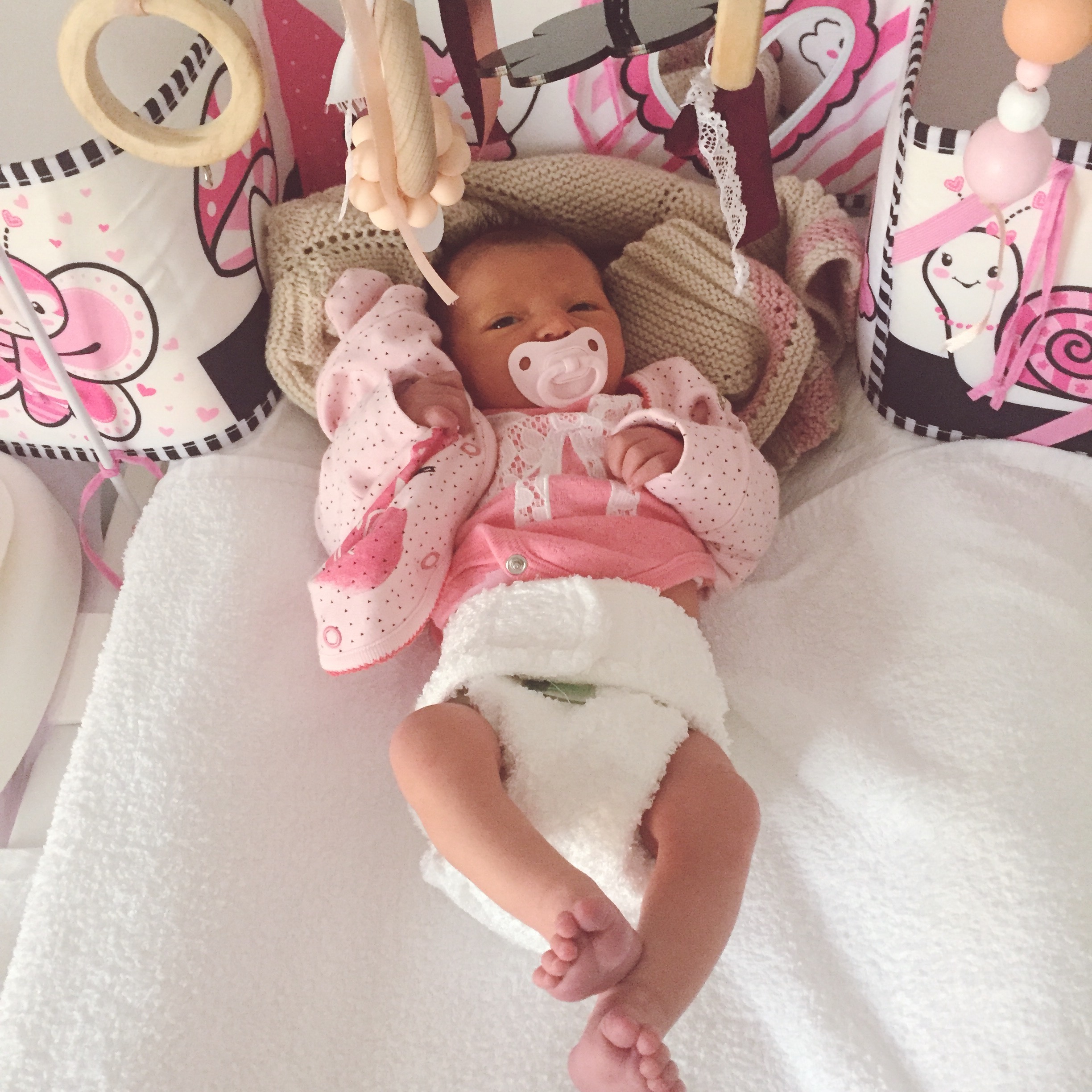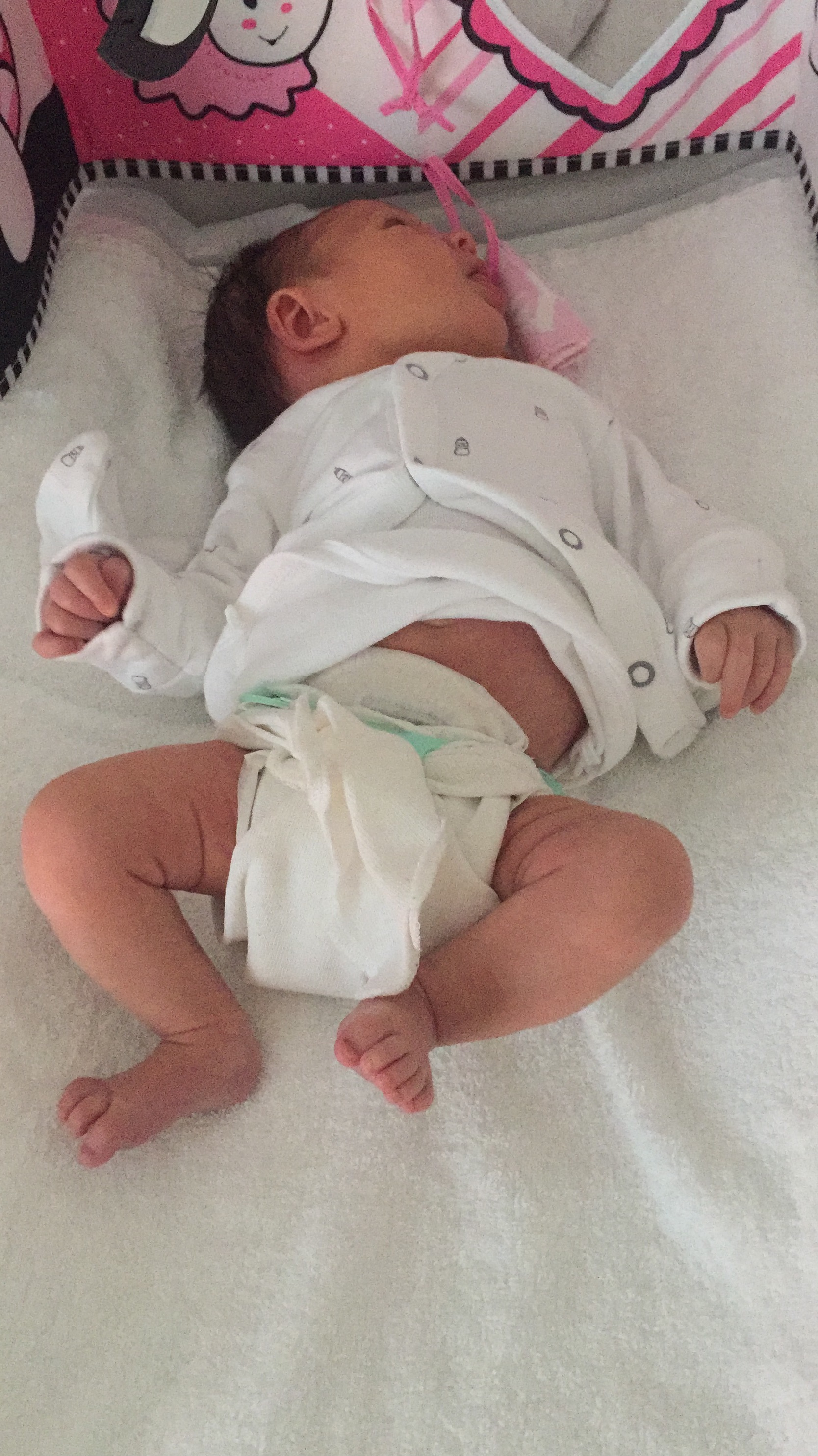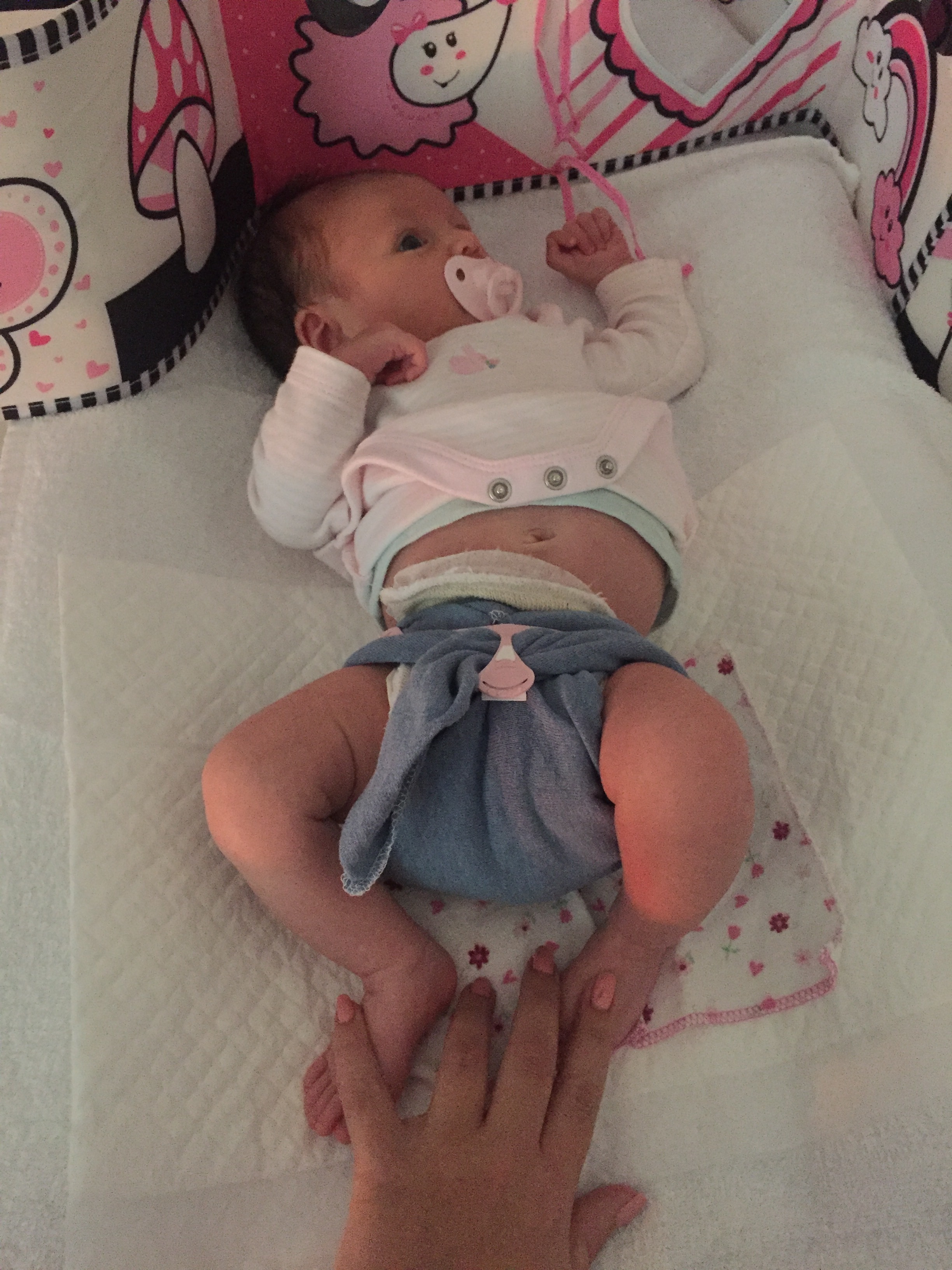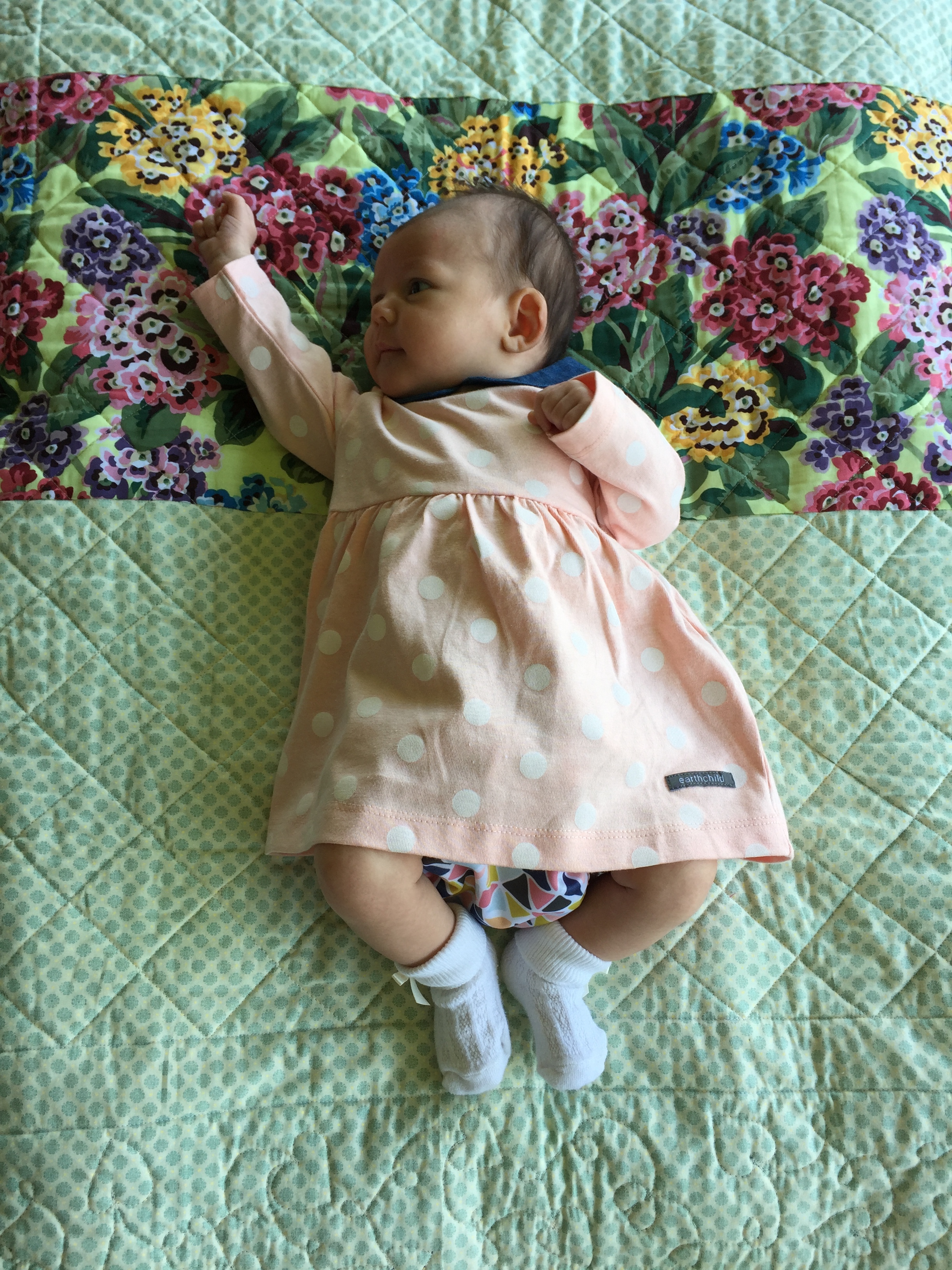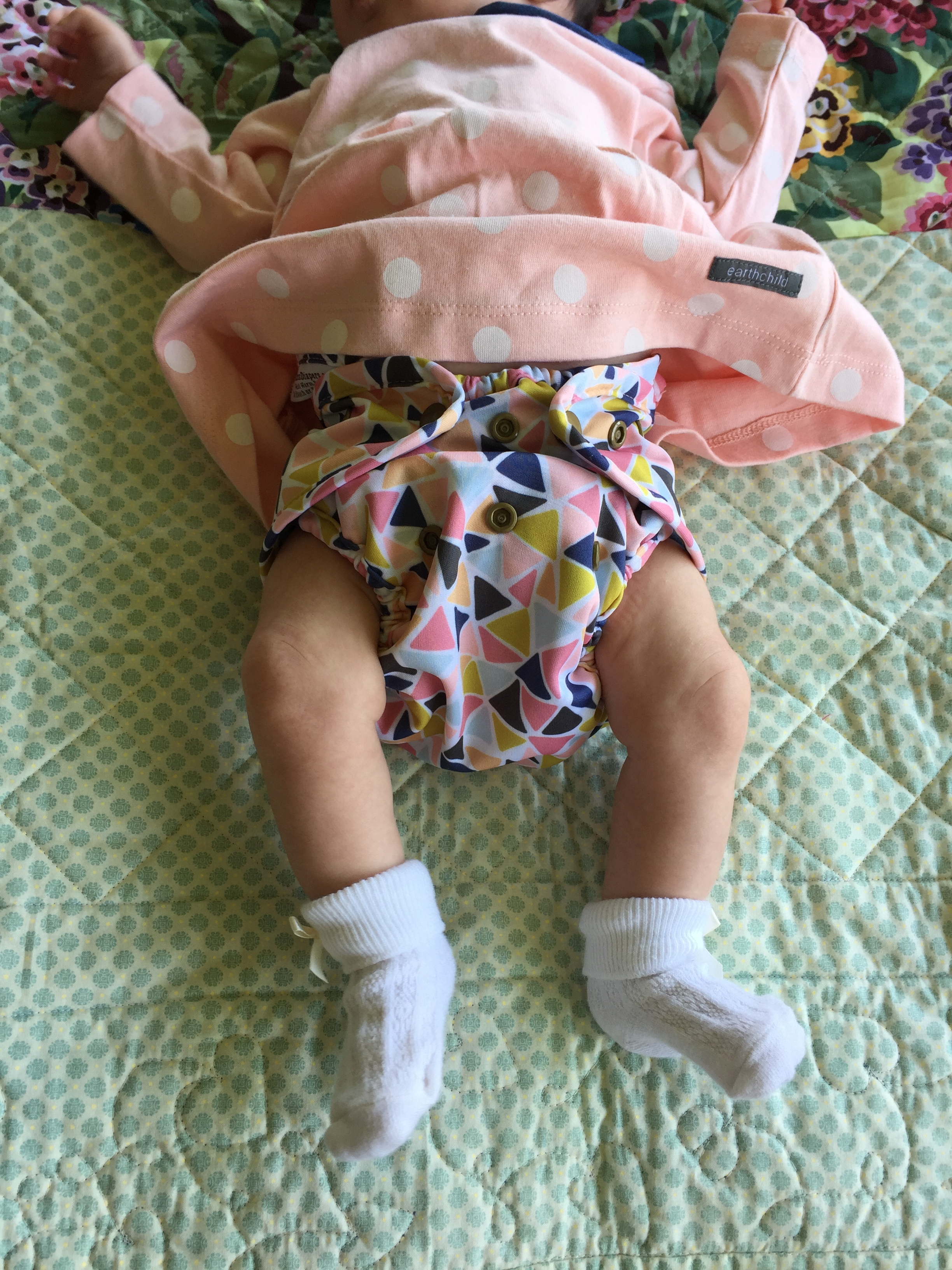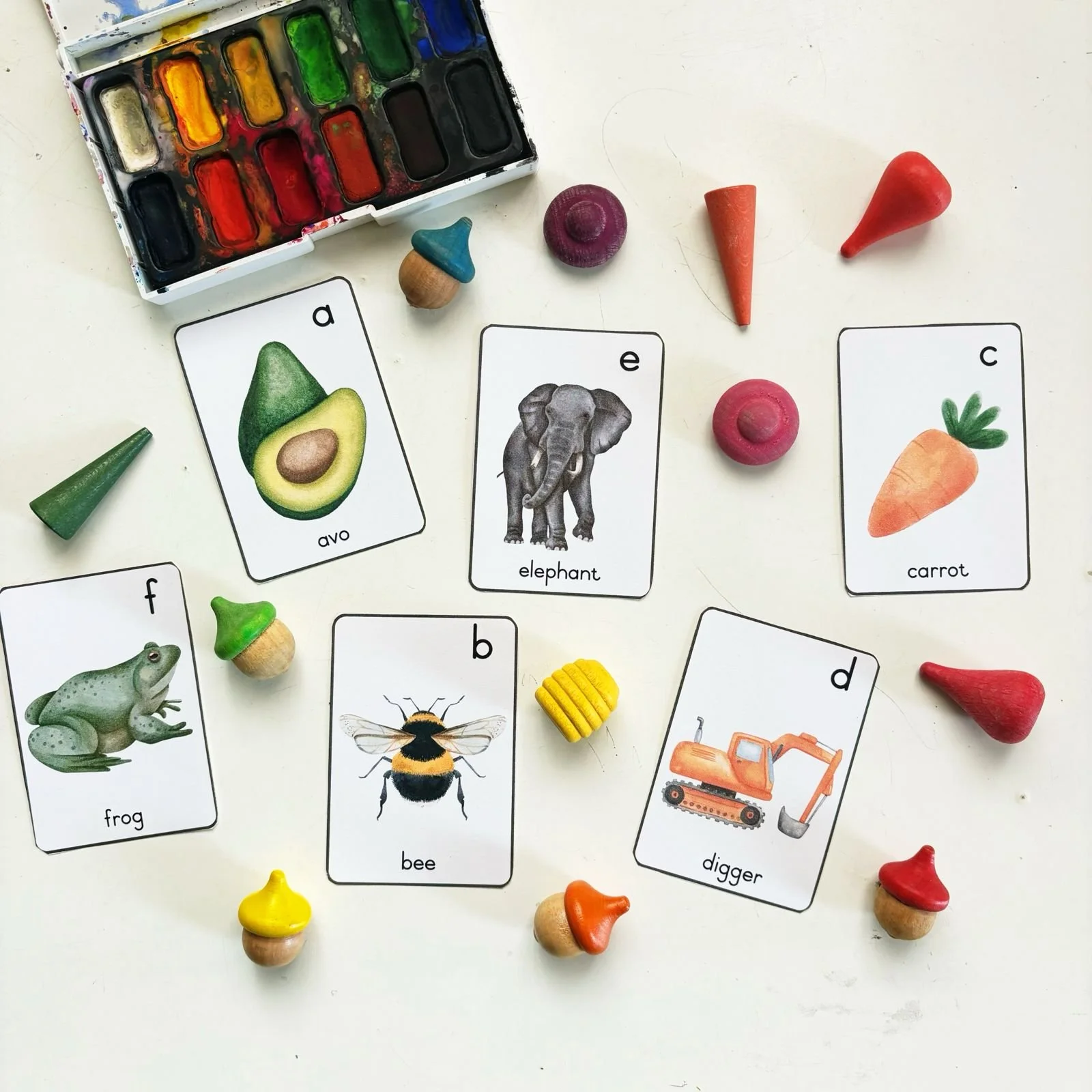Newborn Cloth Nappies 101 - What you need to get started
/Hello and welcome to the first post in my cloth nappy journey! I have been using cloth nappies (or diapers) on my little girl ever since we arrived home from hospital, and I'm so excited to share my experiences with you.
I was only vaguely aware of cloth nappies before being pregnant, and of course the idea of a cloth nappy was very much old school...ie. a huge square of white towel, held together with some torture device called a snappy which needed to be dunked in a big bucket of bleach every day.
Well, I couldn't have been more wrong.
So grab yourself a cup of tea and settle down for a mammoth of a blog post (the first of many!) on how to use cloth nappies!
Modern day cloth nappies are a far cry from the terry towel nappies our moms would have used on us growing up, and let me tell you, they are addictive! Once I dived down the rabbit hole of all things cloth, I found myself spending those sleepless nights during my pregnancy glued to cloth nappy Facebook groups of fellow moms and moms-to-be selling preloved fluff (the affectionate name given to cloth nappies) and scrolling through endless threads on washing routines. These days there are so many different types of cloth nappies to choose from, fabrics to decide on and folds to learn that it can be incredible overwhelming. And depending on the type of nappy you choose to use, it can also be incredibly expensive, with fancy brands and custom made designs leading to some nappies costing R400 - R500 a pop!
Cloth nappies don't have to be expensive though, and can be done on any budget. I'm going to go through all the different types of nappies in another post, but today I'm going to share with you my choice of cloth nappies for my newborn, what you need to get started & hopefully I will inspire you to start your own cloth journey.
Let's start the the very beginning with the question of why you would want to choose cloth nappies over regular disposable nappies.
{A lot of this information has been taken from the South African Cloth Nappy Users Website (SANCU)}
There are so many benefits to using cloth, but here is a little list to help you with your decision:
Saves money (you can re-use your nappies for baby number 2 & 3 etc and even re-sell afterwards if cared for correctly)
Better for the environment (disposable nappies sit in landfills for years and years and years before breaking down...with a single child going through on average of 4000 disposable nappies by the time they are potty trained, one can't even fathom how much waste that is just sitting in landfills the world over)
Beautiful patterns & designs
They contain no hydrogels which leads to less skin irritations & reactions
Cloth nappy myths
Let's set the record straight here and show you that it's actually much easier to go the cloth nappy route than you might have thought:
Cloth nappies leak >>> Cloth nappies contain runny poo better than disposables...bye bye poopsplosions
Cloth nappies are time consuming >>> Using cloth nappies takes roughy an extra 10 minutes of time per day
You need special (expensive) detergent to wash cloth >>> Regular detergent is just fine, simply skip the softner
Cloth nappies smell really bad >>> No hydrogel in cloth means nothing for wee & poo to react with meaning no nasty chemical smells
You don't really save with cloth due to extra detergent, electricity & water bills >>> Even when taking into account all of these costs, it's still possible to save anywhere from R11 000 - R26 000+ when using cloth
Cloth nappies delay milestones like sitting/crawling/walking >>> Cloth nappies give better hip support, are more comfortable, have extra padding to cushion any falls
Cloth nappies are unhygienic >>> With cloth nappies the poo gets disposed of where it should (in the toilet) as opposed to sitting in landfills. Cloth usually gets washed more frequently than rubbish is disposed of. Cloth nappies generally get changed more frequently than disposables.
Washing nappies does not take up hours and hours of your precious time. In reality, the washing machine does all the hard work for you. All you need to do is give them a quick rinse, pop into the machine, and then hang out to dry.
I could go on and on about how great cloth nappies are, but I'd rathe point you in the direction of the SACNU website as it's filled with everything you could possibly want to know about cloth nappies. They also have a fantastic Facebook page (click here) and then there is also a fantastic Facebook group for buying and selling cloth nappies...click here to head on over.
my choice of cloth nappies for newborns
I will be writing another post on all the different types of cloth nappies, but for today I want to share with you what types I've chosen to use for my newborn, why I've chosen these particular nappies and which brands I recommend.
Before we go any further, it must be noted that there is definitely a learning curve to cloth nappies. It takes time to learn what works best for you and your baby, and to learn how to fold nappies to ensure you don't get any leaks. I've had my fair share of leaks and wet clothes from covers not fitting properly, and with those skinny newborn legs it can take a while to work out just the right techniques to ensure the right fit for your baby. Even with the leaning curve, I absolutely love using cloth nappies and you get used to how 'big' their bums are in cloth. Being a first time mom and learning how to hold a newborn, I loved having a big bum to hold onto when carrying her around. Also, I have found that most of the baby clothes generally fit very well over bigger cloth bums so there's no need to worry about that at all.
Flats, Prefolds & Covers
These are by far the cheapest way to do cloth nappies, but these are also the most time consuming.
Let me explain.
Flats and pre-folds require folding, whereas the other types of cloth nappies are very similar to the design of disposables, the biggest difference being you wash them as opposed to throwing them away. I think the biggest motivator behind me choosing flats and covers is the challenge of these types of nappies (yup, I'm the kind of person that when told I can't do something, goes out of my way to prove people wrong hehe). But also, babies grow so fast and don't stay 'newborn size' for very long.
Flats are the most economical of nappies as once your baby has outgrown them, they can be pad-folded and used as booster and added to other nappies for extra absorbency.
Flats
Flats are just what they sound like, a flat piece of fabric (usually a square) that you fold and secure in place with a snappy (or a pin). Flats are made of all different sorts of fabric (which all range in absorbency and therefore price).
The cheapest fabric for flats is cotton flannel (i.e. receiving blankets). I simply cut up some cheap receiving blankets I found at PEP and my mom made some more for me out of receiving blankets I found at a discount towel shop in Joburg (the pink bunnies and grey bears pictured above). She doubled some of them (placed two squares together and overlocked them) and these work amazingly well for nighttime when my little girl sleeps for longer periods of time.
My absolute favourite flats are made from Hemp fabric which is the most expensive fabric. My favourite hemp flats are from Pokkelokkie (the blue ones you can see in my photos). I also have some I ordered online from Biddykins (the white cover pictured above) but I prefer the Pokkelokkie ones. Most cloth moms will tell you that hemp flats make the best nighttime nappies as hemp is the most absorbent fabric. I have found my flannel flats work fantastically too!
Pre-folds
Pre-folds are what they sound like, pre folded nappies sewn into folds to make for easier putting together. I have a small number of newborn pre-folds from MiniMatters (the brown ones pictured above) which I like to use for daytime naps.
I also have a small selection of Little Lamb Bamboo fitted nappies which I had a family member bring over from the UK for me. From my research I read that they are an awesome nighttime solution, and they are perfect for those very late/very early nappy changes when you're still half asleep (or when Dad is on nappy duty and isn't quite into all the folding required for flats). These look like and work just like disposable nappies (the fluffy white ones pictured), and they fasten together with velcro. They do also require a waterproof cover just like the flats and pre-folds.
Here are some photos of my little girl wearing her flats, pre-folds & Little Lamb fitted:
Covers
Covers are the waterproof outer shell that goes on top of your flats, fitteds & pre-folds to ensure that your nappies don't leak. Most covers are made from PUL (a laminated polyester fabric) and have 'snaps' on them that you clip into place to make bigger/smaller. Different brands offer different sizes. I have 10 newborn Biddykins covers (the grey and mint ones pictured below) which I bought second hand (or pre-loved as they are called) from a lovely lady in Durban who never got a chance to use them as her girl was too big for them when born.
You really can build your cloth nappy stash entirely from second hand sales. Some items I would be hesitant to purchase second hand, but covers I am all about buying pre-loved!
I have a small selection of Bambino Mio covers (the white ones pictured) which have velcro fasteners; and which I also bought preloved from a lady on the buy & sell Facebook group (click here). My favourite cover to use in the last few weeks now that Everly's little legs have fattened up, is a 'OSFM' (One Size Fits Most) Blueberry cover I also ordered from the UK but which you can get here in South Africa from TineyHiney. It's the red one pictured above).
I mentioned it before that cloth nappies are addicive. Here's a photo to show you why...how gorgeous is this Buttons nappy cover. I bought this one pre-loved but you can buy them here in South Africa online through TineyHiney (click here):
I don't own many pretty print covers as I wanted to get as many neutral nappies as possible so I can use these all again for baby number 2 (and possibly number 3 & 4 too!). I do have a rather stash of bigger nappies with pretty prints for when Everly is bigger as she will get a lot more use out of them as opposed to the smaller newborn nappies.
Fleece covers are also very popular. I have a few newborn sized fleece covers (also bought pre-loved on the Facebook group mentioned above) which work for quick naps and I like them because they are soft on the bum. I find I get quite a lot of leaks with them though, and so only use them for short naps when I know I'll be changing her nappy after only an hour or so.
And if you're really on a budget, the plastic covers from Pep (yellow, blue & pink pictured above) work just as well! I'm not such a fan of them as they are very plasticky and don't breath at all...not so nice for newborn skin. But they do work well and have lots of stretch in the elastics to go over very big and bulky nappies. These would work particularly well over toweling nappies if you really want to go the traditional nappy route.
Inserts & Boosters
To boost the absorbency of your nappies, you need extra bits of fabric called inserts or boosters. Again, hemp is the most absorbent, but it's also the most expensive. Bamboo is very popular, but the most popular fabric for inserts is microfibre. While microfibre is the cheapest option, it doesn't hold much moisture and so you get compression leaks. It all depends on whether your baby is a light or heavy 'wetter', but usually a combination of different fabrics work well (and of course this also depends on your budget).
My mom made me a few boosters from bamboo towel and mutton cloth (which she found at different hardware stores and it comes in different weaves which means different levels of softness/coarseness).
You can boost your nappies with just about anything. Cotton flannel (receiving blankets) work very well, and the nice thing about flats and pre-folds is the can be used to boost nappies too. Simply fold and pop into your nappy cover between the nappy and the cover for extra absorbency, or layer inside your nappy between bum and the nappy itself.
Extra Bits & Pieces
A few of the extra bits and pieces needed (not all of these things are needed but are nice to have) for your cloth nappy journey:
Wipes:
I use a mixture of cloth wipes & lovely biodegradable 'throwaway' wipes. The cloth wipes are just off cuts from the receiving blanket flats I made. It's a great way to use up extra bits of fabric you might otherwise have thrown away. If you got lots of face cloths for your baby shower, you could also use those are wipes. I fill a little tub with warm water before each change and then use one of the wipes dipped in warm water to clean up all the pooey mess. It's much nicer on her little bottom than a cold wipe, especially when it's cold or in the middle of the night.
I then also use these awesome biodegradable baby wipes from Pure Beginnings. I stocked up at the MamaMagic Expo in Durban, but you can also buy the 3 packs of Pure Beginnings wipes at Dischem.
Liners:
Liners aren't necessary for newborn nappies but they are nice to use. When you do need to use liners is when you use bum creams that aren't cloth safe like Bepanthen, Fissan or Sudocream etc as these creams can clog up the natural fibres of cloth nappies. Using liners protects the nappies from the cream by creating a barrier between the nappy and cream. When baby is bigger and eating solids, liners are a life saver helping you avoid getting your hands really messy. Although these liners claim to be flushable, it's not advised to flush them as they can clog up toilets. I bought these FancyPants liners on Takealot for a bundle price of R300 for 3, they usually retail for about R110. Biddikins also stock bamboo liners. I have also heard that Checkers stock the Cherubs liners which are much more affordable, but they always seem to be out of stock when I go shopping.
Bum Cream:
While it's not necessary to use bum cream with every nappy change like you would when using disposable nappies (this is because babies in cloth nappies tend to be less prone to rashes) you may choose to use bum creams as more of a preventative measure. As mentioned above, most commercial bum creams are not safe to use on cloth nappies, and that's why it's recommended to use a liner if you do use them. If some cream accidentally gets onto the nappy, you can remove it by scrubbing the residue with sunlight dishwashing liquid and an old toothbrush.
Here is a list of locally available bum creams that are safe to use with cloth nappies without having to use liners:
Pure Beginnings
Mother Nature
Wriggly tin
Bloublommetjies
Earthly Lure
Natraloe
Cheeky Monkey Bum balm (Little Lily, Biddykins, Little Details)
Little Ladybugs bum balm
Foxybums bum balm
Ladybird
Sproglets (Smart Bums)
Naturally Beauty-full
Earth Babies
Oshana baby natural barrier cream
Cotton tails bunny bum balm
Kylie Co little bum balm
You can also use Coconut Oil!
Snappies:
These sharp, spikey little things are what hold your nappy together. Traditionally pins would have been used, and you can still use them if you aren't afraid of stabbing your little one hehe.
Snappies come in all sorts of colours and you can find them at Pep and Ackermans for +- R20 for a pack.
I store my nappies in the wicker baskets in my compactum, but there are so many creative ways to store cloth nappies. Here is also a photo of my changing station setup so you can see where keep everything. I found my compactum at an amazing second hand store in Durban. I found the advert on Gumtree and then headed over to Umbilo area to pick it up.
The trick with cloth nappies is not to put all your eggs in one basket when putting together your stash. I highly recommend buying different brands and varied types of nappies until you figure out what works for you and your baby. I went with flats at first because they are the most versatile of nappies and are the cheapest. They work really well for me I don't mind the extra minute or two that I spend folding. I do also keep a very small stash of disposable nappies (sposies) on hand, just in case.
Whew!
It you got through this loooong post I want to commend you and suggest you reward yourself with another cup of tea. I will save my washing routine & how I store my wet nappies for another post, so look out for that post coming soon.
Please let me know if you have any questions, pop them in the comments below and I'll get back to you as soon as I can.
Yours in cloth <3
x










